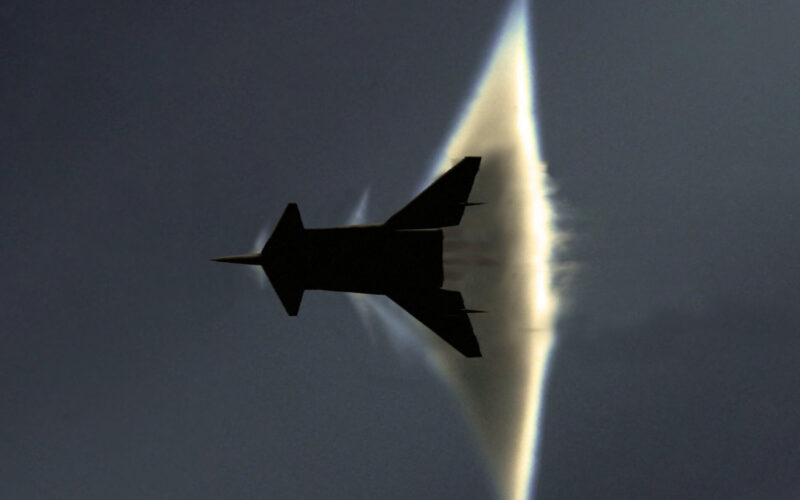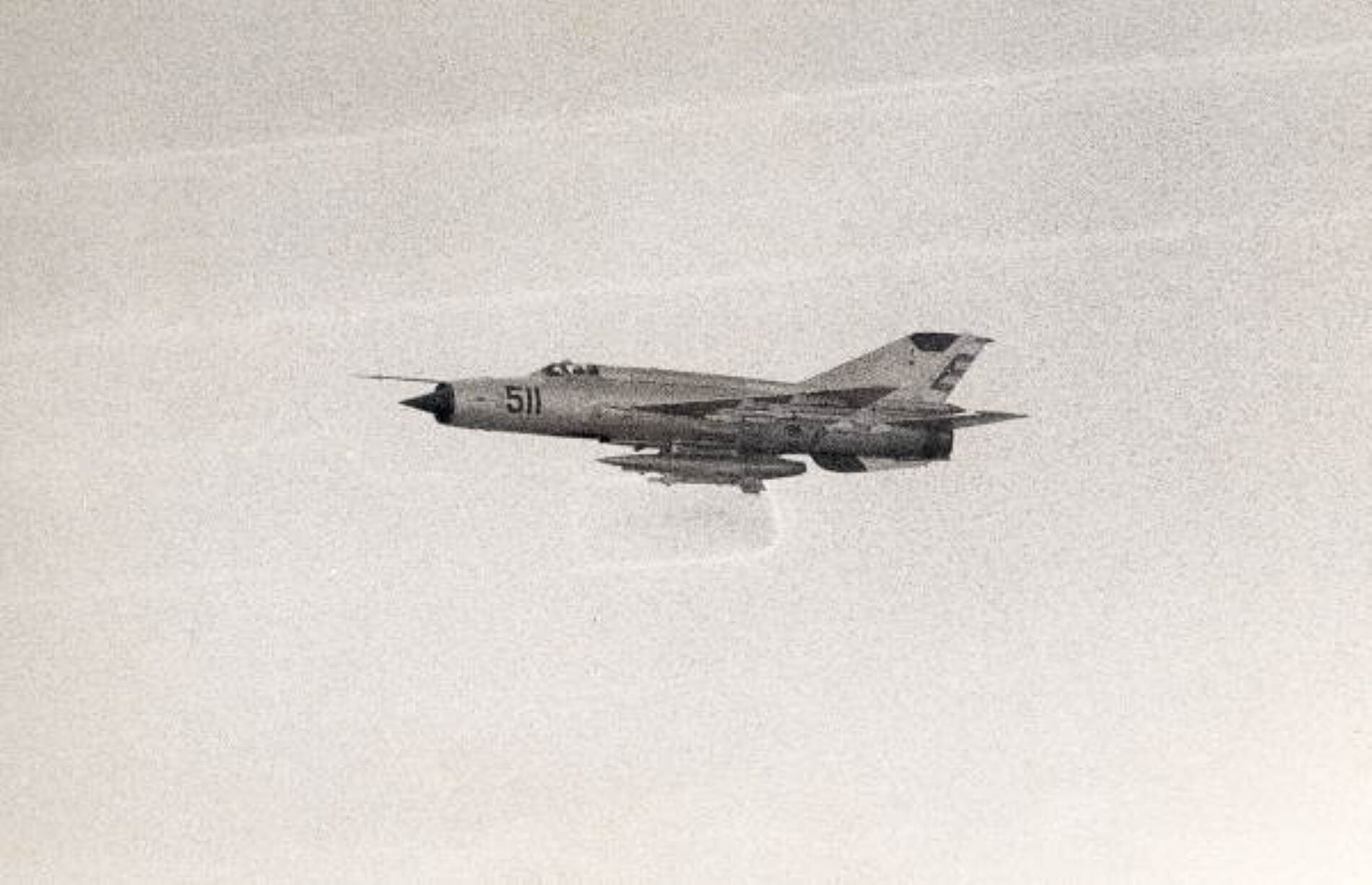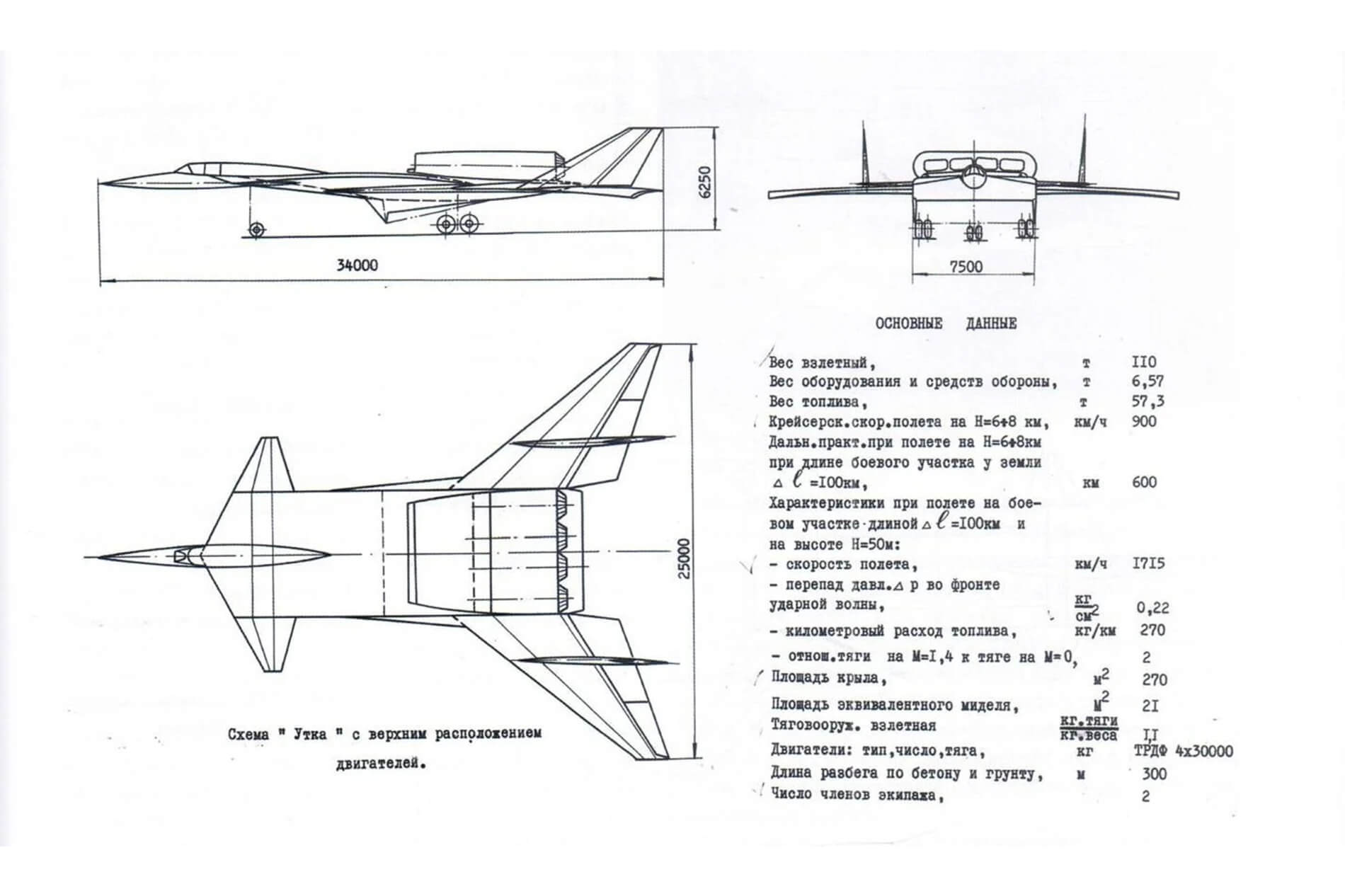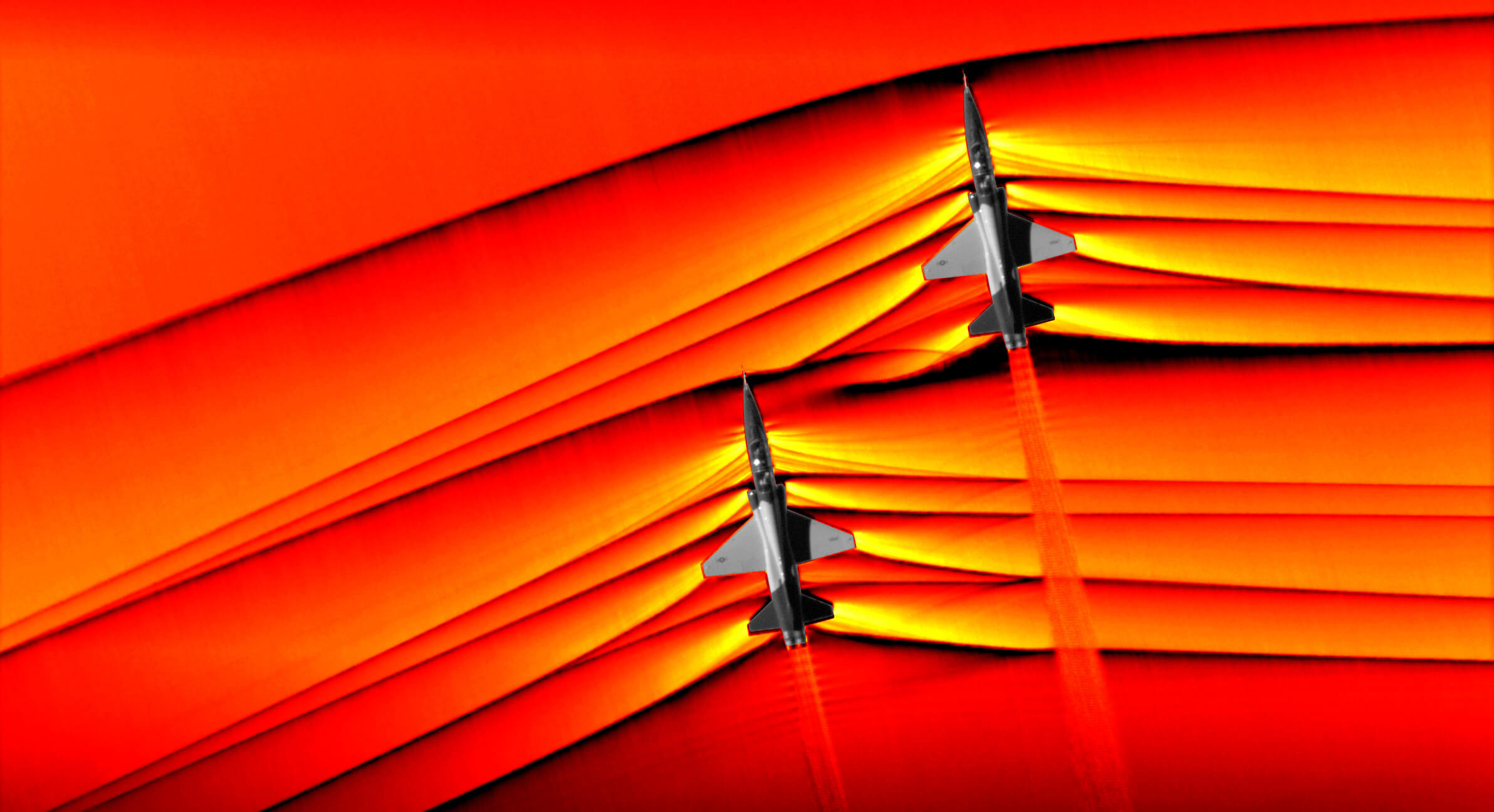Most combat aircraft fall into one of several conventional categories: fighter, bomber, ground attack airplane. The M-25, or “Theme 25”, designed by the Soviet Myasishchev Aircraft Construction Bureau between 1969 and 1972, did not. It was an attack aircraft designed to employ a completely new kind of warfare: destroying enemies with its sonic boom.
The story begins in southwestern Russia in the closing months of 1968. A lone MiG-21S Fishbed fighter jet screams in cold, dry air above farmland near Lipeck, gaining speed as the pilot pushes the throttle grip. He reaches the border of a large proving ground, nudges the flight stick gently forward, and levels at the altitude of a couple dozen meters. The afterburner kicks in. The jet goes supersonic.
Massive shockwave echoes above the barren frozen ground, with chunks of dirt and dried grass flung high up into the air, trailing behind like a sideways hurricane. As any MiG pilot would tell you, a fighter becomes a bomber at supersonic speeds: you are flying on rails, the flight stick is “rubber”, even the minutest maneuver strains the airframe immensely. The further the deadly ground is from you, the better. But secret military experiments are not meant to be safe.
Several sensors are scattered on the ground in the flightpath of the MiG: narrow steel tubes, similar to metal pens, fixed on bench-like stands made of roughly welded tubing. They shake as the plane swoops above and the result is registered.
Six months later, on June 17, 1969, Vladimir Vasilyevich Struminsky, director of the Institute of Theoretical and Applied Mechanics, walks through the Ministry of Aviation Industry in Moscow. He carries a folder marked “Top secret” in his hands. The folder contains the report on earlier experiments, as well as the Ministry council’s decision on a new project proposal: to start the development of “Theme 25: special-purpose sonic wave ground attack aircraft”.
MiG-21 low-level supersonic flight experiments, conducted in a remote proving ground, were a joint effort of the Institute and the Soviet Air Force, ordered by the Ministry. The reason for such an order is not entirely clear and contains a mystery in itself.
The result was definitive: Struminsky would be provided funding, manpower, and connections to go on and develop the “Theme 25”. Although the maximum pressure the MiG-21 sonic boom generated was 0.05 kilogram-force per square centimeter – 0.7 psi, enough to shatter window glass, but barely anything more – the concept proved promising enough.
Mikoyan-Gurevich MiG-21 Fishbed in flight (Cory McDonald / Wikipedia)
Of course, the MiG-21 is a very aerodynamic aircraft, designed to have minimal drag, which means minimal sonic boom too. To have a more powerful sonic boom you have to have an airplane which is way less aerodynamic. The shape of an aircraft is even more important, as it is possible to focus the sonic boom by generating it with flat surfaces, instead of round cross sections of fuselages of regular planes.
According to Struminsky’s research, some modifications to the MiG-21 airframe would increase the shockwave by 5-6 times, pushing into the territory of 5 psi – enough to collapse buildings and cause fatalities.
But in order to make such an unaerodynamic aircraft supersonic, one needs some colossal thrust. On top of that, aircraft’s structure will have to endure all the drag, and the heat that comes with it. To really weaponize the destructive force of a sonic boom, a special, extremely sturdy airframe is needed, and stupendously powerful engines to go with it.
Struminsky, appointed Director of the Institute in 1960 after leaving the Myasishchev Design Bureau, where he contributed to supersonic strategic bomber projects, wasn’t assigned to the task by chance. In 1960, the bureau was disbanded by Nikita Khrushchev himself. Amongst several men responsible for that – men who were actively spreading the idea that due to the development of intercontinental ballistic missiles there was no future for strategic bombers – was none other than Struminsky.
As the bureau was disbanded, its chief – Vladimir Mikhailovich Myasishchev – was relegated to be the head of Central Aerohydrodynamic Institute (TsAGI), prestigious and influential academic organization, where Myasishchev had power to do almost anything, except for the one thing he actually loved – to design aircraft. But he was used to hardships. He was working on experimental airplanes for his entire life, even during several years he spent in Gulag, and little things like airplanes being replaced by missiles could not stop him.
In 1967, Myasishchev left TsAGI and reestablished his bureau, which immediately started working on cutting-edge research and design of spaceplane concepts. Also, it became the exact place where Struminsky was sent with his “Theme 25”.
According to one employee of the bureau, a war between Myasishchev and the man who destroyed his dreams – Struminsky – was expected. But it did not turn out like that. As the two men met for the first time since 1960, they took off their jackets, sat by the table and began a civil discussion of two scientists who had a desire to create something nobody else could.
They discussed the idea of the sonic boom attack aircraft, its implementation, difficulties and research needed. A detailed design proposal was formulated immediately and sent to the Ministry.
The two designers had the resources of Struminsky’s Institute of the Impossibly Long Name, Myasischev’s bureau, TsAGI, and the Air Force behind them. They worked separately – Struminsky in Novosibirsk, Myasishchev in Moscow – but the work went fast. By the end of 1970, another round of tests with the MiG-21 was conducted, several possible designs were outlined and the work on models for wind tunnel testing was about to begin.
The fuselage was supposed to be flat and rectangular, with a sharp nose and a cockpit in front. The underbelly would house “a ledge” – a protrusion that would extend during the attack and increase drag by 60%. Small “ribs” would extend from the corners of the “ledge”, focusing the shockwave even more.
Drawing of one of the variants of the M-25. An extended “ledge” can be seen at the bottom of the fuselage. (Крылья Родины)
There were several proposals on the size of the aircraft, with weights between 20 and 165 tons. The one weighing 110 tons, with fuselage length of 39 meters and a wingspan of 25 meters, was developed the furthest and possibly considered as the most promising.
For its wings, several configurations – including delta and a conventional one – were considered, as well as several engine placements: within the fuselage, under the wings, between the tail fins. The engineers mostly focused on the last one, but in order to implement it, they needed to have the engines themselves.
Possibly the main reason why the prototype of the M-25 – a combination of Struminsky’s “Theme 25” and Myasishchev’s “M” – was never built, was the lack of those engines. It was a usual problem for Soviet aircraft designers, exacerbated by the unique nature of the project.
The desired Mach number the M-25 had to reach for the maximum effect of its shockwave was 1.4, but the most powerful engine the bureau had at its disposal was the experimental Lyulka AL-21F, which did not work beyond Mach 1.15. There were proposals to use rocket boosters at the moment of the attack. That seemed reasonable but did not help push the project through the bureaucracy it had encountered.
Most of our insights into the M-25 and its design come from Stanislav Gavrilovich Smirnov, the head engineer of Myasishchev bureau during that period. He documented the initial meeting between Struminsky and Myasishchev, wrote the project proposal, and served as the liaison between Moscow and Novosibirsk. In 2017, Smirnov shared a comprehensive article in the Russian aviation journal “Krylya Rodiny,” chronicling his experiences with the project.
Smirnov’s article delves into the impactful dynamic between Struminsky and Myasishchev, leaving a lasting impression on the young engineer. While portraying the M-25 as a remarkable and promising aircraft, there’s a sense of regret over the unrealized proposal.
Smirnov, a pacifist, criticizes the notion of utilizing advanced technology for destructive purposes and disapproves of the nickname “Hell Reaper” given to the M-25. Despite the paradoxical stance, his focus remains on the novelty and execution challenges, emphasizing the scientific aspect over the funding rationale.
Another thing Smirnov scolds in his article is the Soviet bureaucracy. He vividly describes difficulties faced by the engineers, the way the Communist party tried to interfere with their activities, and the complaints some “herostrati” filed on scientists in hopes of being promoted.
According to Smirnov, the M-25, just as many other promising projects, was killed by the barely functioning system which gave power to incompetent and overly zealous officials. The work on the M-25 was ended in 1972, after the party had got doubts about the real destructive capabilities of such a weapon and the engineers had been accused of wasting money and time on useless research.
Smirnov might be right about some aspects of the project and wrong about others. He claims that the Ministry of the Aviation Industry got the idea of weaponizing sonic boom (and appointed Struminsky for the job) after seeing this idea in Western media.
Supposedly, the Americans and the French tried to create similar aircraft too and conducted their experiments with the F-104, the F-105, and the Mirage III in the mid-60s. While experiments on the effects of the sonic boom on the human body were conducted and widely covered, there is no evidence that someone in the West tried to weaponize it.
A formation of two T-38s in supersonic flight, their sonic booms captured with schlieren photography technique (NASA)
Also, Smirnov theorizes that by flying several M-25s in formation their shock waves would resonate, increasing their effect greatly, which would render it capable of tearing off tanks turrets. Such a possibility seems far-fetched, as in 2019 NASA conducted the first supersonic formation flight experiments and the interaction between the shockwaves turned out to be much more complex.
Smirnov admits that some ideas his team had in the late 60s were rather naive in retrospect and got disproven in later decades, but when it comes to the concept of ground attack with the sonic boom, he stands firm.
There might be some merit to it. While the M-25 never materialized, there were other attempts to do something similar, albeit in a rather ad-hoc way.
In the 1980s, several MiG-21s were sent to Afghanistan, both to conduct bombing missions and to have some fighters nearby just in case Pakistan decided to provide active military support to the Mujahideen. There are multiple accounts of MiGs using “psychological warfare” by flying over Afghan positions at supersonic speeds, hoping to cause chaos amongst enemy combatants.
Some say it worked, some say it did not. One pilot describes a routine, when pilots would enter the combat zone at the altitude of 200 meters at the speed of Mach 1.4. Sometimes they would notice a herd of sheep below them. Sometimes, while returning back from the mission, the herd would be lying down and the shepherd would be falling to the ground and covering his head with his hands at the mere sight of Soviet aircraft.
So far, it seems, several stunned sheep are the only victims of all the Soviet sonic boom warfare attempts. Despite the M-25 being one of the most unique and interesting aircraft proposals in the history of aviation, let’s hope the situation does not change.




